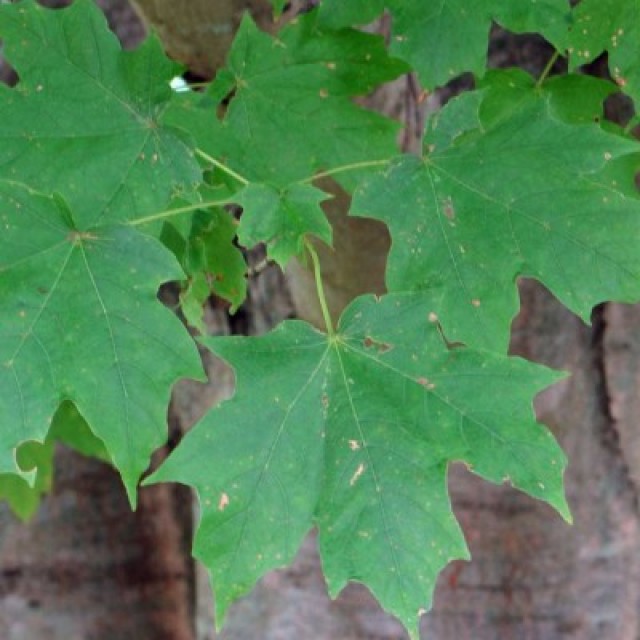COMMON NAME
Sugar maple
SCIENTIFIC NAME
Acer saccharum
Plant family
Soapberry (Sapindaceae)
Plant group
Deciduous Trees and Shrubs
Deciduous tree with straight trunk and upward angled branches normally reaching between 80-115 feet when fully grown. Native to Eastern North America.
3027 reports
985+
OBSERVERS
3027+
OBSERVATIONS
Identification hints
Leaves have five lobes with few teeth and pale undersides. Leaf buds are brown. Sap from a broken leaf stalk is not milky. Mature bark is deeply furrowed or shaggy. (Can be confused with the Norway maple which has milky leaf sap, green leaf buds, and tight bark with narrow groves) Fruit is a two-winged samara. In autumn these trees change color to scarlet, orange, or yellow. Found in woods and often planted.
Did you know?
Sugar maples are the most common tree used for making maple syrup. Trees are tapped in the spring when the nights are below freezing and the days are above 40 degrees Fahrenheit. Sugar maples are also important trees for wildlife. Many animals, such as rabbits and deer browse the branches and songbirds will use these trees for nesting.
DISTRIBUTION IN TH U.S.
Alabama
,
Arkansas
,
Connecticut
,
Delaware
,
Georgia
,
Iowa
,
Illinois
,
Indiana
,
Kansas
,
Kentucky
,
Louisiana
,
Massachusetts
,
Maryland
,
Maine
,
Michigan
,
Minnesota
,
Missouri
,
Mississippi
,
North Carolina
,
North Dakota
,
New Hampshire
,
New Jersey
,
New York
,
Ohio
,
Oklahoma
,
Pennsylvania
,
Rhode Island
,
South Dakota
,
Tennessee
,
Virginia
,
Vermont
,
Wisconsin
,
West Virginia
HABITAT
Found throughout Eastern North America in mixed and deciduous forests.
ATTRIBUTES
Leaves
Deciduous, green in the spring and summer changing to yellows, oranges, and reds in the fall. Palmate with five lobes and opposite.
Flowers
Arranged in panicles (dangling clusters) of five to ten without petals and colored a yellow-green.
Fruits
A pair of winged seeds (samaras) that change from light green to light brown when ripe.
Bark
Young bark is gray and smooth. As the tree ages the bark darkens and forms vertical ridges.
Bloom Time
Early spring after at least 30 growing degree days when the tree is at least ten years old. Commonly early May.
See Menu
- 2021 Chicago Botanic Garden. All Rights Reserved.
-
Creative Commons
BY-NC-SA 4.0 - Terms of Use
- Privacy Policy
- Data Sharing and Citation Policies
- 2021 Chicago Botanic Garden. All Rights Reserved.



